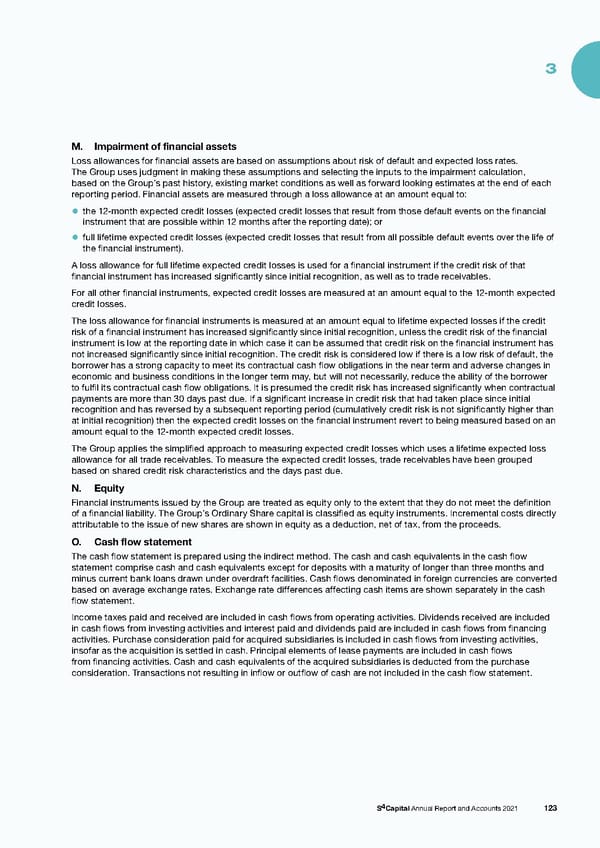3 M. Impairment of financial assets Loss allowances for financial assets are based on assumptions about risk of default and expected loss rates. The Group uses judgment in making these assumptions and selecting the inputs to the impairment calculation, based on the Group’s past history, existing market conditions as well as forward looking estimates at the end of each reporting period. Financial assets are measured through a loss allowance at an amount equal to: • the 12-month expected credit losses (expected credit losses that result from those default events on the financial instrument that are possible within 12 months after the reporting date); or • full lifetime expected credit losses (expected credit losses that result from all possible default events over the life of the financial instrument). A loss allowance for full lifetime expected credit losses is used for a financial instrument if the credit risk of that financial instrument has increased significantly since initial recognition, as well as to trade receivables. For all other financial instruments, expected credit losses are measured at an amount equal to the 12-month expected credit losses. The loss allowance for financial instruments is measured at an amount equal to lifetime expected losses if the credit risk of a financial instrument has increased significantly since initial recognition, unless the credit risk of the financial instrument is low at the reporting date in which case it can be assumed that credit risk on the financial instrument has not increased significantly since initial recognition. The credit risk is considered low if there is a low risk of default, the borrower has a strong capacity to meet its contractual cash flow obligations in the near term and adverse changes in economic and business conditions in the longer term may, but will not necessarily, reduce the ability of the borrower to fulfil its contractual cash flow obligations. It is presumed the credit risk has increased significantly when contractual payments are more than 30 days past due. If a significant increase in credit risk that had taken place since initial recognition and has reversed by a subsequent reporting period (cumulatively credit risk is not significantly higher than at initial recognition) then the expected credit losses on the financial instrument revert to being measured based on an amount equal to the 12-month expected credit losses. The Group applies the simplified approach to measuring expected credit losses which uses a lifetime expected loss allowance for all trade receivables. To measure the expected credit losses, trade receivables have been grouped based on shared credit risk characteristics and the days past due. N. Equity Financial instruments issued by the Group are treated as equity only to the extent that they do not meet the definition of a financial liability. The Group’s Ordinary Share capital is classified as equity instruments. Incremental costs directly attributable to the issue of new shares are shown in equity as a deduction, net of tax, from the proceeds. O. Cash flow statement The cash flow statement is prepared using the indirect method. The cash and cash equivalents in the cash flow statement comprise cash and cash equivalents except for deposits with a maturity of longer than three months and minus current bank loans drawn under overdraft facilities. Cash flows denominated in foreign currencies are converted based on average exchange rates. Exchange rate differences affecting cash items are shown separately in the cash flow statement. Income taxes paid and received are included in cash flows from operating activities. Dividends received are included in cash flows from investing activities and interest paid and dividends paid are included in cash flows from financing activities. Purchase consideration paid for acquired subsidiaries is included in cash flows from investing activities, insofar as the acquisition is settled in cash. Principal elements of lease payments are included in cash flows from financing activities. Cash and cash equivalents of the acquired subsidiaries is deducted from the purchase consideration. Transactions not resulting in inflow or outflow of cash are not included in the cash flow statement. S4Capital Annual Report and Accounts 2021 123
 s4 capital annual report and accounts 2021 Page 124 Page 126
s4 capital annual report and accounts 2021 Page 124 Page 126